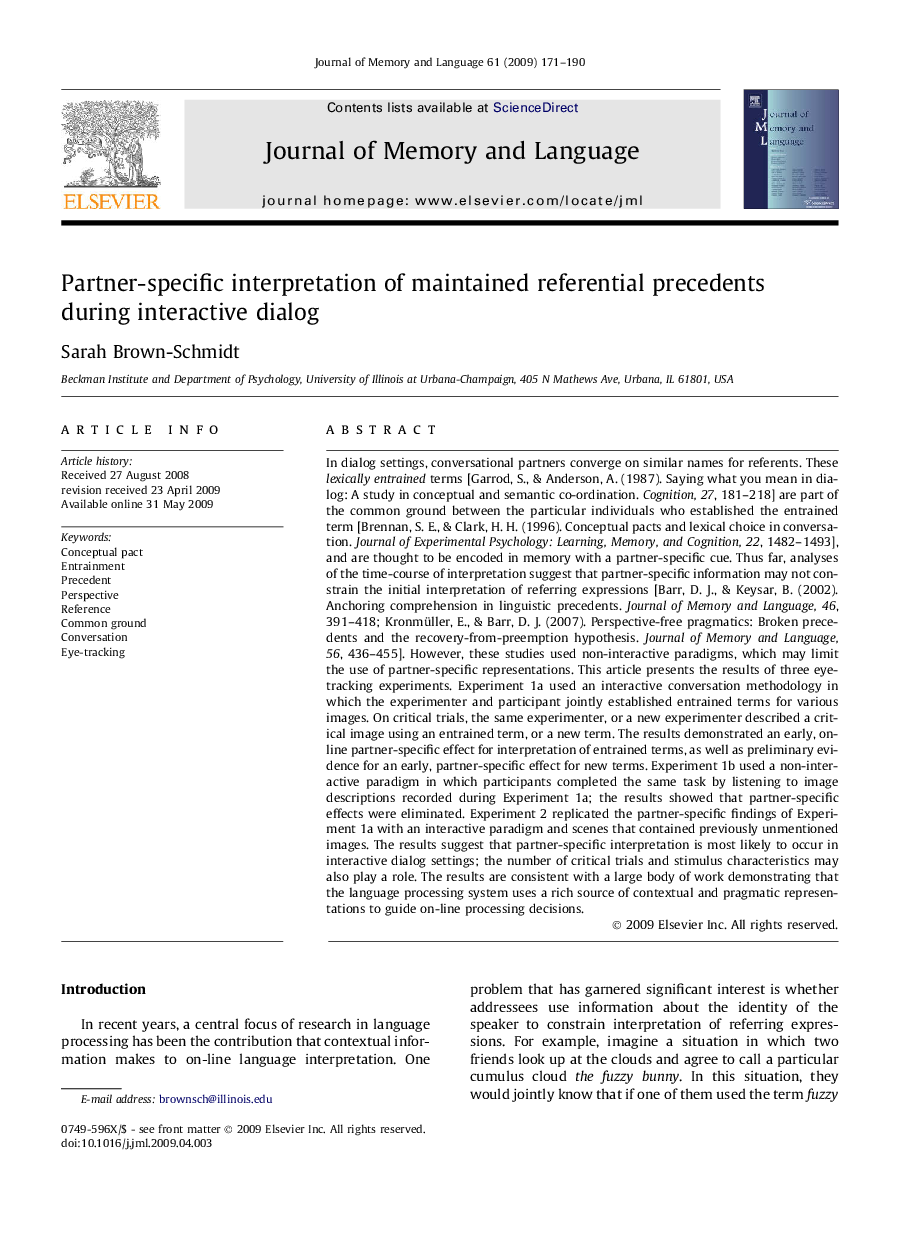| Article ID | Journal | Published Year | Pages | File Type |
|---|---|---|---|---|
| 932110 | Journal of Memory and Language | 2009 | 20 Pages |
In dialog settings, conversational partners converge on similar names for referents. These lexically entrained terms [Garrod, S., & Anderson, A. (1987). Saying what you mean in dialog: A study in conceptual and semantic co-ordination. Cognition, 27, 181–218] are part of the common ground between the particular individuals who established the entrained term [Brennan, S. E., & Clark, H. H. (1996). Conceptual pacts and lexical choice in conversation. Journal of Experimental Psychology: Learning, Memory, and Cognition, 22, 1482–1493], and are thought to be encoded in memory with a partner-specific cue. Thus far, analyses of the time-course of interpretation suggest that partner-specific information may not constrain the initial interpretation of referring expressions [Barr, D. J., & Keysar, B. (2002). Anchoring comprehension in linguistic precedents. Journal of Memory and Language, 46, 391–418; Kronmüller, E., & Barr, D. J. (2007). Perspective-free pragmatics: Broken precedents and the recovery-from-preemption hypothesis. Journal of Memory and Language, 56, 436–455]. However, these studies used non-interactive paradigms, which may limit the use of partner-specific representations. This article presents the results of three eye-tracking experiments. Experiment 1a used an interactive conversation methodology in which the experimenter and participant jointly established entrained terms for various images. On critical trials, the same experimenter, or a new experimenter described a critical image using an entrained term, or a new term. The results demonstrated an early, on-line partner-specific effect for interpretation of entrained terms, as well as preliminary evidence for an early, partner-specific effect for new terms. Experiment 1b used a non-interactive paradigm in which participants completed the same task by listening to image descriptions recorded during Experiment 1a; the results showed that partner-specific effects were eliminated. Experiment 2 replicated the partner-specific findings of Experiment 1a with an interactive paradigm and scenes that contained previously unmentioned images. The results suggest that partner-specific interpretation is most likely to occur in interactive dialog settings; the number of critical trials and stimulus characteristics may also play a role. The results are consistent with a large body of work demonstrating that the language processing system uses a rich source of contextual and pragmatic representations to guide on-line processing decisions.
